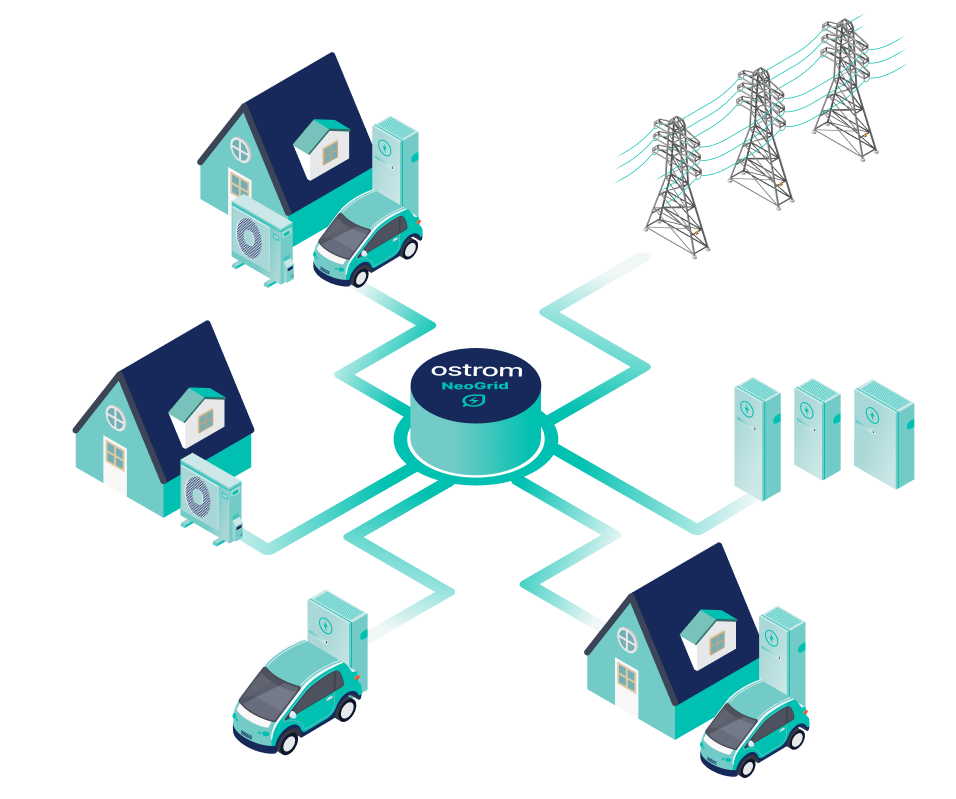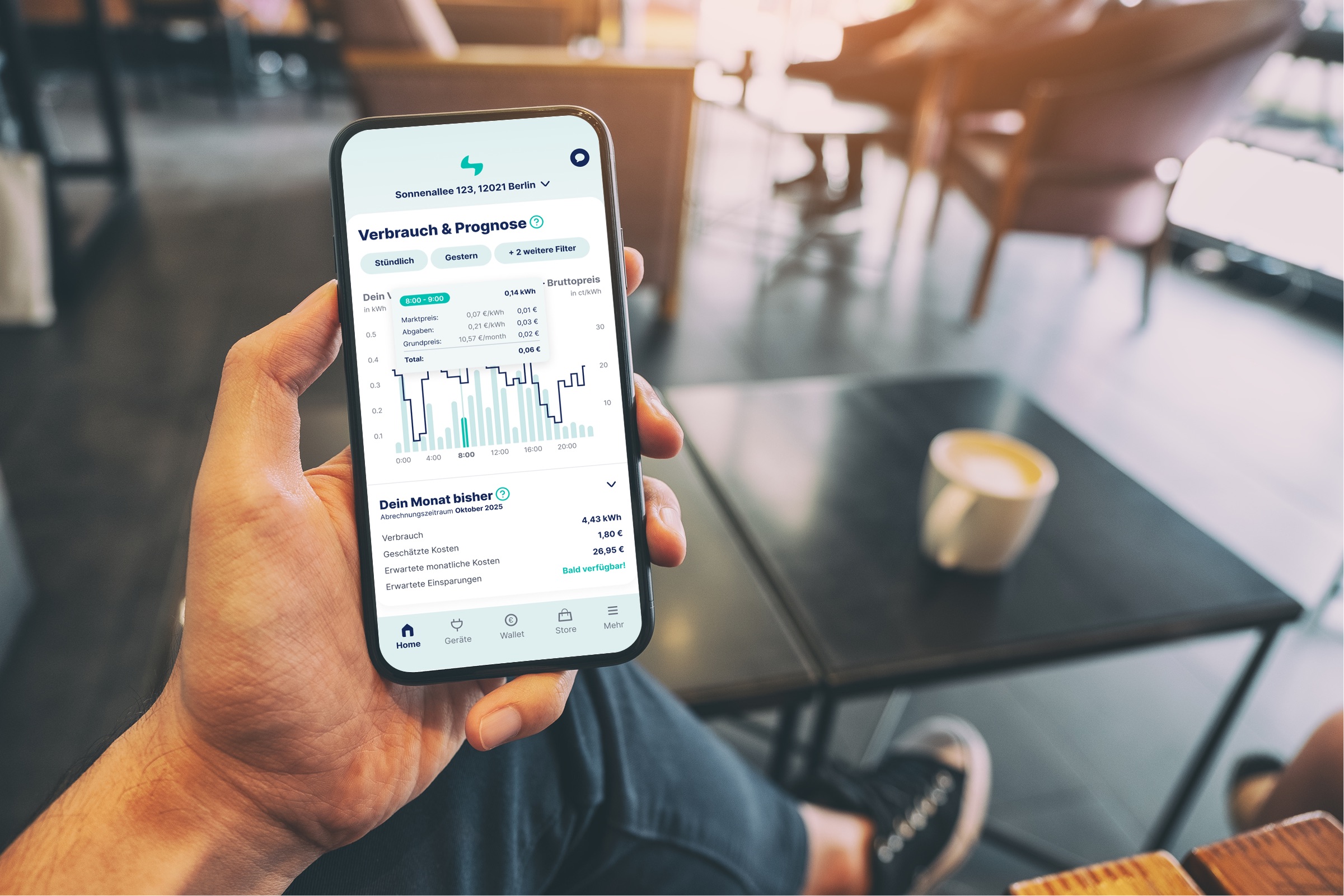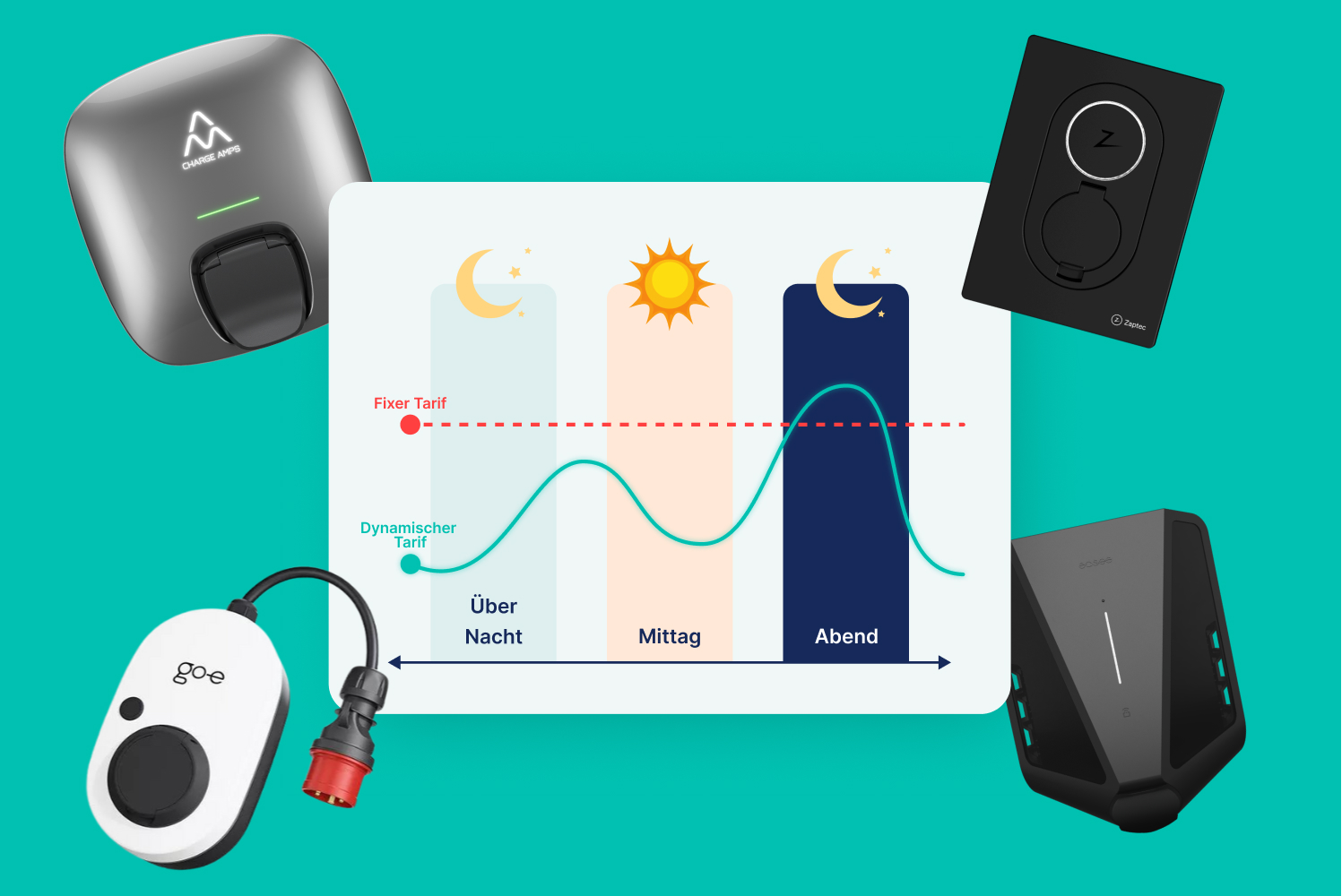Energy
Teil 1: Was ist ein KiloWatt, eine kWh und andere Energiebegriffe?
By
Team Ostrom
1.10.2022

3
Min.

Elektrizität ist ein grundlegender Bestandteil unseres täglichen Lebens und es ist wichtig, die Begriffe und Einheiten zu kennen, mit denen sie gemessen und beschrieben wird. Hier ist eine Zusammenfassung einiger gängiger Strombegriffe:
- Kilowatt (kW): Eine Einheit der Leistung, die 1.000 Watt entspricht. Die Geschwindigkeit, mit der Energie übertragen oder verbraucht wird, z. B. die von einem Gerät verbrauchte Leistung oder die Leistung eines Kraftwerks, wird oft in Kilowatt gemessen.
- Kilowattstunde (kWh): Eine Energieeinheit, die der Energie entspricht, die von einem Kilowatt Leistung über einen Zeitraum von einer Stunde verbraucht oder erzeugt wird. Stromrechnungen basieren oft auf der Anzahl der Kilowattstunden, die ein Haushalt oder ein Unternehmen verbraucht.
- Ampere (A): Eine Einheit des elektrischen Stroms, die dem Fluss von einem Coulomb Ladung pro Sekunde entspricht. Die Stärke oder Intensität eines elektrischen Stroms wird in Ampere gemessen.
- Volt (V): Eine Einheit der elektrischen Potenzialdifferenz, die der Arbeit entspricht, die erforderlich ist, um eine Einheit Ladung gegen ein elektrisches Feld von einem Punkt zu einem anderen zu bewegen. Die elektrische Potentialdifferenz zwischen zwei Punkten oder die Kraft, die den Fluss der elektrischen Ladung antreibt, wird in Volt gemessen.
- Watt (W): Eine Einheit der Leistung, die einem Joule Energie pro Sekunde entspricht. Die Geschwindigkeit, mit der Energie übertragen oder verbraucht wird, z. B. die von einem Gerät verbrauchte Leistung oder die Leistung eines Kraftwerks, wird oft in Watt gemessen.
- Lumen (lm): Eine Einheit des Lichtstroms, die der Lichtmenge entspricht, die von einer Punktlichtquelle mit einer gleichmäßigen Lichtstärke von einer Kerze in einer Raumwinkeleinheit abgegeben wird. Die Helligkeit oder Intensität einer Lichtquelle wird oft in Lumen gemessen.
- Ohm (Ω): Eine Einheit des elektrischen Widerstands, die dem Widerstand eines Leiters entspricht, in dem ein Potenzialunterschied von einem Volt einen Strom von einem Ampere verursacht. Der Widerstand, der dem Fluss elektrischer Ladung durch einen Leiter entgegensteht, wird in Ohm gemessen.
- Hertz (Hz): Eine Einheit der Frequenz, die einem Zyklus pro Sekunde entspricht. Die Anzahl der Zyklen oder Schwingungen eines Wechselstroms oder Signals pro Sekunde wird in Hertz gemessen.
- Leistungsfaktor (PF): Ein Maß für die Effizienz eines elektrischen Systems, das dem Verhältnis zwischen der zur Last fließenden Wirkleistung und der Scheinleistung im Stromkreis entspricht. Ein Leistungsfaktor von 1 bedeutet, dass die gesamte an die Last gelieferte Leistung genutzt wird, während ein Leistungsfaktor von weniger als 1 bedeutet, dass ein Teil der Leistung durch Blindleistung verloren geht.
- Gleichstrom (DC): Ein elektrischer Strom, der nur in eine Richtung fließt, im Gegensatz zum Wechselstrom (AC), der periodisch die Richtung ändert. Viele elektronische Geräte, wie Computer und Handys, werden mit Gleichstrom betrieben.
- Wechselstrom (AC): Ein elektrischer Strom, der regelmäßig seine Richtung ändert, im Gegensatz zum Gleichstrom (DC), der nur in eine Richtung fließt. Wechselstrom ist die Form von Elektrizität, die häufig in Haushalten und Unternehmen verwendet wird.
Wenn du diese grundlegenden Begriffe der Elektrizität verstehst, kannst du besser nachvollziehen, wie Elektrizität erzeugt, übertragen und in unserem täglichen Leben genutzt wird.
More from Ostrom















.avif)